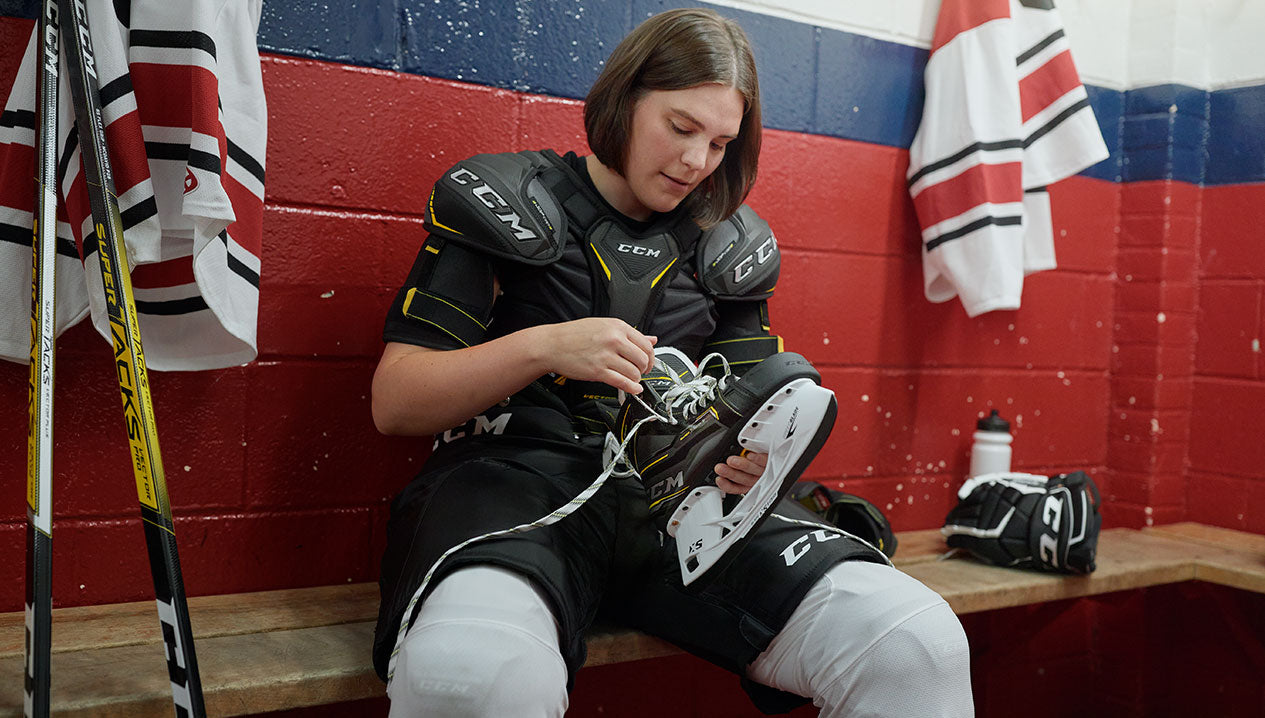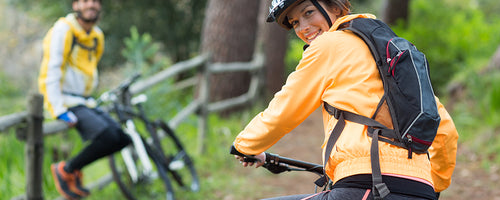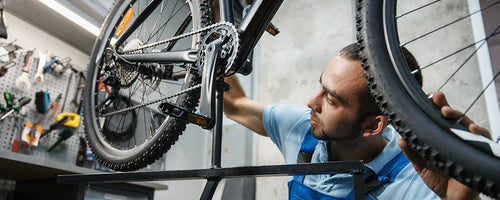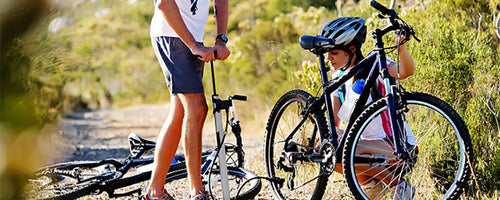How To Choose the Right Bicycle

The proper size of bike frame, as well as adjustments to your seat height and handle bar position, can make a world of difference in your comfort level when cycling.
Make the most of your ride by considering the following when choosing a bike:
Style of Bicycle
The style of bicycle you need will depend on how you plan on using it. The most commonly ridden types of bicycles are Mountain, Road , Hybrids, BMX, Power-assisted and fold up bikes, with several designs within those categories such as fixed wheel, roadster and touring styles.
Mountain bikes have larger tires with more prominent treads and are built for rough uneven trails. Heavy duty suspension forks absorb shock and the bike’s frame is more durable to take the pounding. These additions alter the frame geometry to an optimal shape for stability and durability.
Road bikes have narrow tires, with a low tread design for riding on smooth surfaces at high speeds. The dropped and curled handle bars enable an aerodynamic position to increase riding speed, and the frames are ultra light.
Hybrid bikes take features from Mountain and Road bikes and are often the choice for commuters as they have the stability of a mountain bike, with the smooth ride of a road bike. Hybrids often can be accessorized with panniers and baskets to carry personal items, and the handle bars are designed for a comfortable, more upright positioning of the body.
BMX bikes were introduced in the 1970‘s when kids mimicked motorcross racers on dirt tracks. There are several disciplines of BMX riding, including park, dirt, flatland, race and street, and bikes have specific features such as metal pegs on the axles, no brakes, frames designed for balance, and the ability to spin the handlebars 360 degrees for tricks and stunts.
Power assisted bikes are great for short distance commuters and allow you to tackle hills and arrive at your destination without working up a sweat with the use of a motor that is powered by a rechargeable battery. Models range from traditional bike designs to wannabe Vespa styles.
Fold up bikes - are best suited to short rides, especially for mixed-mode commuters, as they can be carried onto a bus or train, and do not take up much room at the office or in your apartment. The downside is that they are slower than regular bicycles due to the necessary compromises on design and small wheels.
Frame Size
Choosing the correct frame size to your body proportions not only provides a safe ride, but will also improve your efficiency and power when riding. Make sure the bike’s frame size is in proportion with your inseam, or your “pubic bone height,” which is the measurement of the base of your pelvis between your legs to the base of your heel. Frame heights are gender specific and will differ between bike styles, such as those designed for downhill riding or cross country. Road bikes typically have frame sizes in the 48-63cm range, while most mountain bike frames are between 38-55cm, and hybrids will fall overlap both of those at 34-59 cm. The geometry of the frame, or the angles of all the bars of the body of the bike, create a shape that will have effect on the length of the wheel base (distance between the wheels) and with the stand-over clearance (the amount of space between your crotch and the top bar of the frame).
To see if the bike is the correct size, straddle the frame, and with both feel flat on the ground, check that you have a minimum of 7.5 cm (approx. 3 inches) between the top bar on the bike and your body. Most manufactures have a frame size chart to assist you. The goal is to be able to straddle the bike comfortably with some clearance – a bike that is too big will be hard to control and will be tilted when you are straddling it with your feet flat on the ground. A bike that is too small won’t allow for proper body alignment and pedal through power.
Seat Height
The proper seat height will help maximize your pedal power and minimize fatigue. While sitting on the bike with your feet on the pedals, your legs should be less than fully extended at the bottom stroke, so your knees are slightly bent. You want a comfortable reach for the pedals; if they are too far away you will be leaning and reaching from side to side off-setting your balance and creating possible back and hip pain. To ensure comfort, either keep the saddle level or tilt it slightly back, keeping your weight centered and evenly distributed on the seat. When you are at a stop, while seated on the saddle, your tippy toes should be comfortably touching the ground.
Saddles are designed to support your sit bones (the pelvic bones you feel when you sit on a hard surface) and to keep pressure off the sensitive surrounding soft tissue, and will inevitably come down to your individual anatomy and personal preferences.
Handle Bars
Handle bar height is a reflection of the type of bike you are riding, as well as personal preference, but the ideal position is to have your elbows slightly bent. The higher the handle bars, the less stress you will have on your neck and lower back giving you greater comfort and visibility. However this position does not make you very aerodynamic and can affect your speed capability. A lower handle bar position allows your body to be more compact and gives you a more aerodynamic position, helping to drive more power through the pedals and increasing your speed.
For expert advice on bikes and bicycle gear and equipment that is right for your ride, level of experience, and budget, come see us at your local Source for Sports bike store near you. We Fit Your Game.
Join Source Nation to get the latest news on product launches, Source Exclusive product lines, tips and tricks for parents and players, and more!



